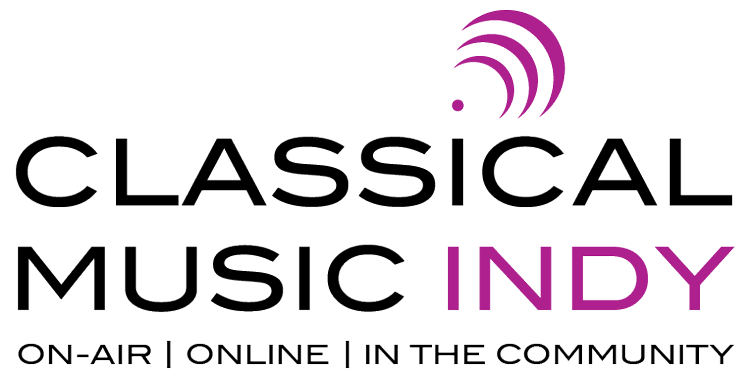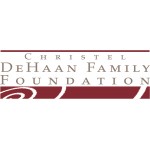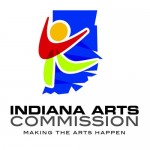Henry James’ famous advice to creative people—to be one on whom nothing is lost—has inspired artists since 1884, when his essay The Art of Fiction was published in Longman’s Magazine. Caitlin and Robert Negron have not only embraced James’ advice; they’re using it as a catalyst for community development on the city’s west side through Indy Convergence, a company they founded in 2007. Photos by Indy Convergence. Words by Crystal Hammon. Adapted from Classical Music Indy’s NOTE Magazine.
Community Catalyst
Indy Convergence Begins 2019 Performances with a Floating Stage on the White River
Indy Convergence originated as an informal collaboration between three artists—Caitlin, a dancer; her husband, Robert, an actor and playwright; and Dara Weinberg, a playwright and director. Their initial plan was to blend talents from each discipline in an annual experimental project to help them grow as artists and teachers.
All three artists believed their best work came from taking risks, but they knew from experience how tough it is to invest money in risky projects. What if they failed or got terrible reviews?
Expanding the idea of collaboration seemed an ideal way to encourage innovation while investing in other artists and the community they called home. “We wanted to create a space [for artists] to make those mistakes,” says Caitlin Negron, executive director of Indy Convergence.
Sinking roots on the city’s west side
In February 2016 the Negrons bought a building on West Michigan Avenue in Haughville as home base for the organization and began using everything—their experiences, skills, relationships and the geographic features of the Near West neighborhood—as inspiration for Indy Convergence. The site offered living quarters as well as workspace.
The Negrons moved in and started learning about the neighborhood where they now live and work. “We spent a year just going to meetings and having conversations to see how Indy Convergence could fit in and contribute best,” Caitlin says.
They started with a two-week summer residency, focusing on collaborations between artists from various disciplines. The remainder of the year, Indy Convergence offers residencies for individual artists. Both programs give artists time, space and materials to develop new work.
A Haitian custom comes to Near West neighborhoods
Early on, the Negrons recognized that a key component of Indy Convergence’s success would depend on engagement with westside neighbors. Music quickly marked itself as one of most effective tools for engagement, a strategy confirmed when Robert Negron visited Haiti, where a friend was building community centers steeped in the arts. There he learned about Asset Based Community Development (ABCD)—a formal model that suggests how to interact with community partners.
The emphasis of the ABCD model is to identify neighborhood assets and use them to create opportunities. “Even though we went to Haiti specifically to work with artists, the nature of the location was all community work, all the time,” Caitlin says. From that trip, a lasting partnership began, with artists from the United States and Haiti going back and forth to exchange cross-cultural experiences and knowledge.
One of the perks came last April when a group of Haitian artists visited Indianapolis. Indy Convergence solicited their ideas about how to engage residents of Indy’s Near West neighborhoods. Their Haitian friends suggested a rara, a progressive parade of music that begins in the mountains of Haiti and travels toward a spot in the city below, collecting people along the way. It ends with thousands of people, all singing and playing various kinds of music.
A community triumph
Last summer Indy Convergence initiated a westside version of the rara, featuring musicians like Ramon Hutchins, a former Haughville resident. Hutchins grew up with an interest in classical and baroque music and now leads Palace, a band that plays a mix of blues and soul. “Ray has this great way of connecting on a really personal level with people, which we needed in our neighborhood,” Caitlin says. “We knew they were the right group to ask, and they were daring enough to accept.”
With support from Indy Convergence, Reconnecting to Our Waterways, the Near West Livability Task Force and neighbors who hosted four block parties, the rara celebrated four distinct neighborhoods on the city’s west side: Haughville, Hawthorne, We Care and Stringtown.
Hutchins’ band performed on a float that moved from one party to the next, culminating in a final celebration near the Haughville branch of the Indianapolis Public Library. “It was really fun,” he says. “If the same thing had happened in my neighborhood when I was a kid, I would have been running behind that truck.”
Hutchins likes the unobtrusive way the organization works. “Its purpose is not just to revitalize, but to pump up a neighborhood’s morale without taking its power, and they use the arts—everything from music, theatre and dance—to do it,” he says.
Floating artists
Leveraging the universal appeal of music and their proximity to the White River, Indy Convergence launches a grand project in March—the Rising Tide Initiative. The project’s highlight is a floating stage for performances on the White River, funded by a grant from Reconnecting to Our Waterways.
The floating stage will feature five performances in 2019, starting with Hutchins’ band. They hope to draw small, manageable audiences in 2019, giving themselves time to refine logistics. The goal in 2020 is to host 20 performances with bring-your-own seating on the banks of the White River.
Eventually, Indy Convergence wants to build an amphitheater and make concerts widely accessible with transportation. Not all the programming will be music; some will feature community partners such as Fonseca Theatre Company, Eiteljorg Museum and Kenyetta Dance Company.
The 2019 season starts with outdoor music, a seasonal arts experience everyone can appreciate. “People love music outside in the summer,” Caitlin says. “When people see dance, they may be in awe of the movement, but they can feel left out if they think they don’t ‘understand it.’ With music, you just have to be there, listen and enjoy.”
For more information on Indy Convergence, visit their website here.







Leave a Reply